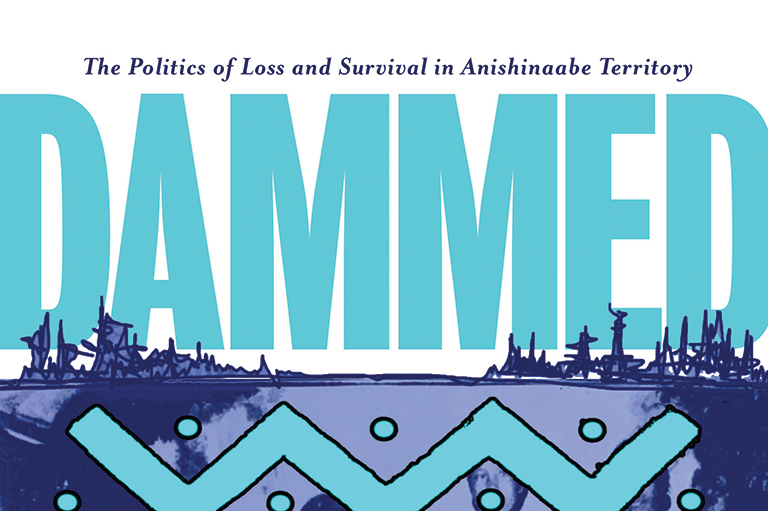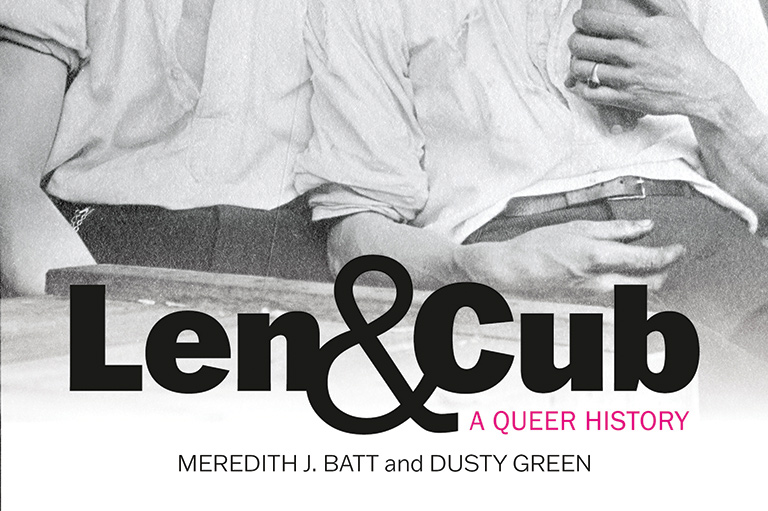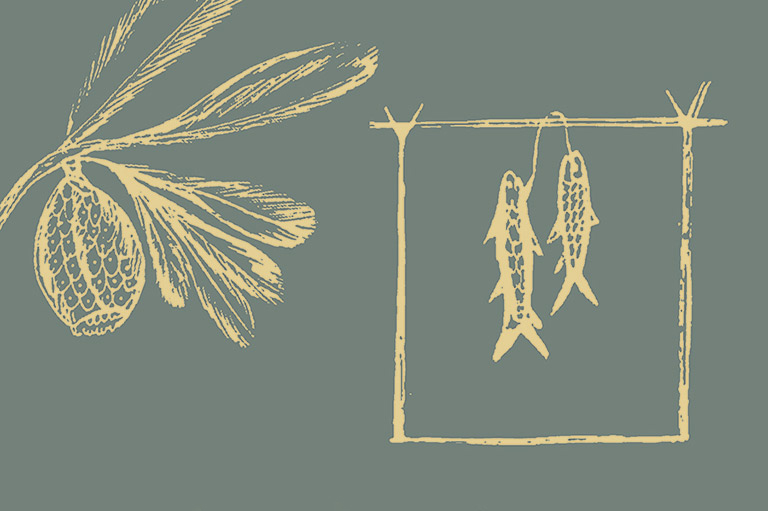Uplift
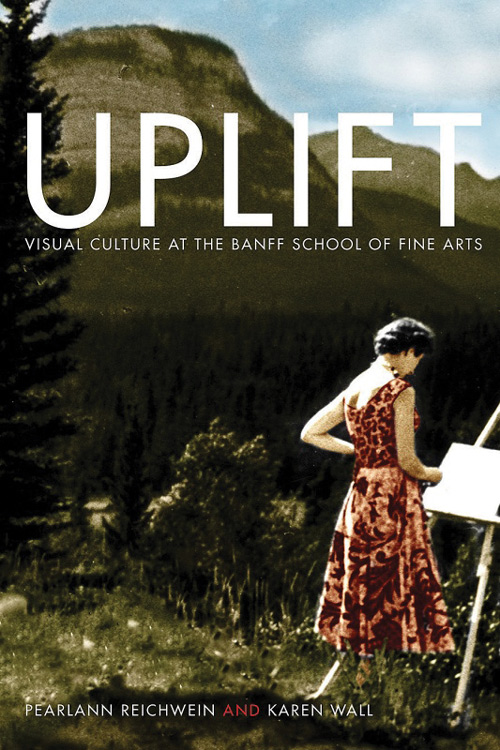
Uplift: Visual Culture at the Banff School of Fine Arts
by PearlAnn Reichwein and Karen Wall
UBC Press
354 pages, $34.95
From towering trees to majestic mountains, from iconic prairie skies to vast coastal oceans, striking natural imagery has represented our country to the external world as well as to Canadians themselves. Pearl- Ann Reichwein and Karen Wall’s book Uplift explores the profound influence of the Banff School of Fine Arts on the development of Canada’s image and its definition as a nation.
Banff has long been an iconic Canadian destination, calling to mind pristine lakes and mountain views, campfires and rustic lodging. Landscape-painting practices encouraged by the school, particularly in its early decades, became a central cultural reference that, according to the authors, established “the dominant ‘ways of seeing’ of Canadian culture and national identity.”
Readers will enjoy historical photos illustrating Banff National Park’s allure and natural beauty as they were being captured by painters. While portions of the book are dense reading because the authors sometimes tackle many topics at once, Reichwein and Wall nonetheless do a lovely job of weaving in Indigenous histories along with the experiences of women and other underrepresented groups.
Reichwein is a University of Alberta professor of history who has written and edited books about mountaineering, while Wall is a professor of communication, media, and heritage studies at Athabasca University and has written about sports and culture in Alberta. Their book offers a rich interdisciplinary history of Canada’s cultural identity over four decades by considering the development of the town of Banff and the art school that’s thrived there for nearly a century.
Originating in the 1930s as part of the University of Alberta’s Department of Extension, the Banff School of Fine Arts soon moved to its permanent site on land offered by the National Parks Branch. It eventually expanded to become a renowned adult-education destination and cultural hub that is now named the Banff Centre for the Arts and Creativity.
The school’s programs were intertwined with the advancement of a domestic and international Canadian tourism industry that began with the establishment of Canada’s first national park in the Rockies in 1887 and the opening of the Canadian Pacific Railway’s Banff Springs Hotel in 1888. In fact, the school was conceived by its long-time director Donald Cameron — who worked closely with his wife, Stella Cameron — as an “educational institution and world centre for art and culture in the Canadian Rockies,” a “campus in the clouds” as important as Oxford, Harvard, or Yale, an international arts destination to rival the world-famous Salzburg Festival of music and theatre.
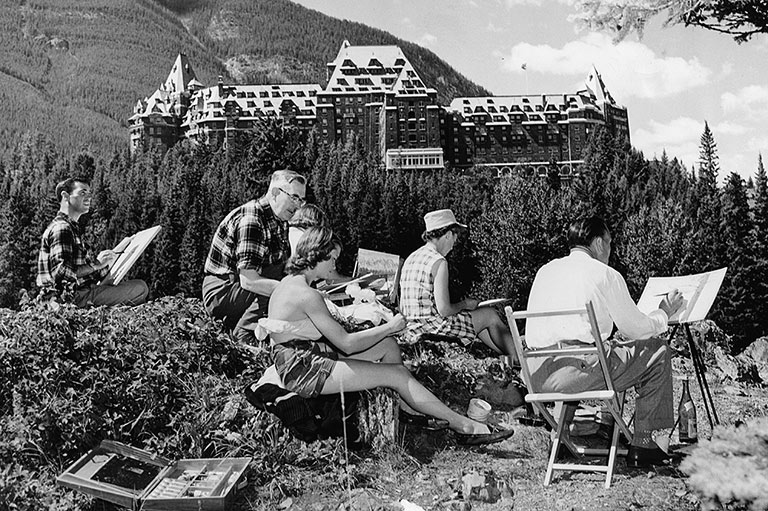
“The Banff School envisioned by Cameron, with its mandate to develop the creative and performing arts of Canada, manifested overtones of cosmopolitan Canadian nationalism in a Rocky Mountain tourist town situated in the symbolic landscape of Canada’s first national park,” the authors write.
Middle-class young adults flocked to summer courses taught by artists, many of them well-known, who were themselves attracted to the school as it grew in prestige and popularity. Through the creation of the school, the Camerons “saw themselves as building citizens and shaping skills and tastes to enrich Canada’s freedom and prosperity as a civil society within a liberal democratic model.”
The school’s growth echoed Canada’s growth as a nation. Through the postwar era of the 1940s to the 1960s, according to Reichwein and Wall, its rise was closely associated with nation-building enterprises such as the Canada Council for the Arts, established in 1957, and other institutions concerned with forging a Canadian cultural identity.
“Canada is a new and dramatic and vigorous country … Artists are beginning to capture that feeling,” a Banff student wrote in 1947. This fascinating book captures the Canadian essence, vigour, and feeling of Banff in view of the legacy of its fine arts school.
We hope you’ll help us continue to share fascinating stories about Canada’s past by making a donation to Canada’s History Society today.
We highlight our nation’s diverse past by telling stories that illuminate the people, places, and events that unite us as Canadians, and by making those stories accessible to everyone through our free online content.
We are a registered charity that depends on contributions from readers like you to share inspiring and informative stories with students and citizens of all ages — award-winning stories written by Canada’s top historians, authors, journalists, and history enthusiasts.
Any amount helps, or better yet, start a monthly donation today. Your support makes all the difference. Thank you!
Themes associated with this article
Advertisement
With 7 uniquely curated newsletters to choose from, we have something for everyone.


